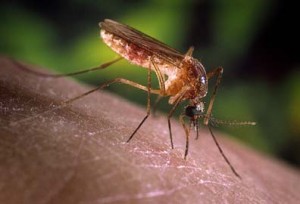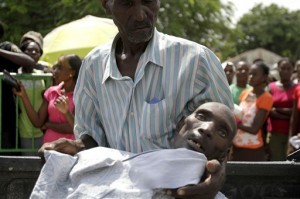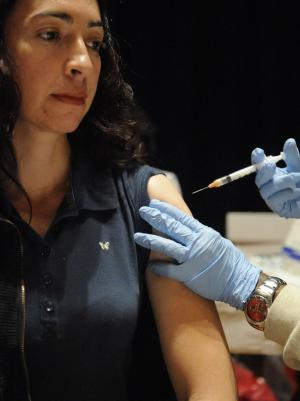 OK, so it’s not just CNAs. It’s also medical assistants, medical billing and coding professionals and the physicians they all support that are working overtime to address the seeming increase in outbreaks of diseases like West Nile. The Huffington Post this week that this season’s West Nile outbreak is the worst so far thanks to the warm winter and hot summer which favors the explosion of mosquito populations (which carry and transmit the disease). However, it is not just West Nile. This year has seen a resurgence of the Ebola virus on the African continent as well as other illnesses such as the food borne salmonella virus. Whooping cough also seems to be making something of a resurgence. It seems likely that a pandemic is not outside the realm of possibility given the nature and number of diseases at work today. Whether the rise (or resurgence) of these diseases has to do with climate change or anti-innoculation movements, the fact is, medical offices all over are seeing an upswing in patient volume. This means more work for certified nursing assistants, medical assistants, medical coding and billing staff and all manner of medical professionals.
OK, so it’s not just CNAs. It’s also medical assistants, medical billing and coding professionals and the physicians they all support that are working overtime to address the seeming increase in outbreaks of diseases like West Nile. The Huffington Post this week that this season’s West Nile outbreak is the worst so far thanks to the warm winter and hot summer which favors the explosion of mosquito populations (which carry and transmit the disease). However, it is not just West Nile. This year has seen a resurgence of the Ebola virus on the African continent as well as other illnesses such as the food borne salmonella virus. Whooping cough also seems to be making something of a resurgence. It seems likely that a pandemic is not outside the realm of possibility given the nature and number of diseases at work today. Whether the rise (or resurgence) of these diseases has to do with climate change or anti-innoculation movements, the fact is, medical offices all over are seeing an upswing in patient volume. This means more work for certified nursing assistants, medical assistants, medical coding and billing staff and all manner of medical professionals. Diseases Like West Nile Keep CNAs Busy in 2012
 OK, so it’s not just CNAs. It’s also medical assistants, medical billing and coding professionals and the physicians they all support that are working overtime to address the seeming increase in outbreaks of diseases like West Nile. The Huffington Post this week that this season’s West Nile outbreak is the worst so far thanks to the warm winter and hot summer which favors the explosion of mosquito populations (which carry and transmit the disease). However, it is not just West Nile. This year has seen a resurgence of the Ebola virus on the African continent as well as other illnesses such as the food borne salmonella virus. Whooping cough also seems to be making something of a resurgence. It seems likely that a pandemic is not outside the realm of possibility given the nature and number of diseases at work today. Whether the rise (or resurgence) of these diseases has to do with climate change or anti-innoculation movements, the fact is, medical offices all over are seeing an upswing in patient volume. This means more work for certified nursing assistants, medical assistants, medical coding and billing staff and all manner of medical professionals.
OK, so it’s not just CNAs. It’s also medical assistants, medical billing and coding professionals and the physicians they all support that are working overtime to address the seeming increase in outbreaks of diseases like West Nile. The Huffington Post this week that this season’s West Nile outbreak is the worst so far thanks to the warm winter and hot summer which favors the explosion of mosquito populations (which carry and transmit the disease). However, it is not just West Nile. This year has seen a resurgence of the Ebola virus on the African continent as well as other illnesses such as the food borne salmonella virus. Whooping cough also seems to be making something of a resurgence. It seems likely that a pandemic is not outside the realm of possibility given the nature and number of diseases at work today. Whether the rise (or resurgence) of these diseases has to do with climate change or anti-innoculation movements, the fact is, medical offices all over are seeing an upswing in patient volume. This means more work for certified nursing assistants, medical assistants, medical coding and billing staff and all manner of medical professionals. 



 There’s an old expression used to convey the idea that what appears obvious is frequently the truth. The expression goes, “If it looks like a duck, walks like a duck and quacks like a duck, then it must be a duck”. Well, this bit of folk wisdom is not to be trusted. Especially when it comes to the claims of, well, quacks! That is, purveyors of bogus medical items. From phony H1N1 “swine flu” cures online, to aisles upon aisles of homeopathic “remedies”, unregulated by the FDA on shelves in pharmacies across the country, people are frequently taken in by sales pitches that seem completely plausible.
There’s an old expression used to convey the idea that what appears obvious is frequently the truth. The expression goes, “If it looks like a duck, walks like a duck and quacks like a duck, then it must be a duck”. Well, this bit of folk wisdom is not to be trusted. Especially when it comes to the claims of, well, quacks! That is, purveyors of bogus medical items. From phony H1N1 “swine flu” cures online, to aisles upon aisles of homeopathic “remedies”, unregulated by the FDA on shelves in pharmacies across the country, people are frequently taken in by sales pitches that seem completely plausible.  I don’t know about you, but I have never been a proponent of the annual flu vaccine. I have always felt that it was really only necessary for the very young and the very old/infirm. But I also know that influenza became pandemic on a faily predictable schedule about once every 30 years or so. And since it has been nearly 40 years since the last pandemic of “Hong Kong” Flu killed 1 million people in 1968-69, I am thinking this year, I ought to at least get my 4 year old innoculated. So I called my pediatrician and they said, “No we don’t have any H1N1 vaccine and no we don’t have any info on when any will be available”. Shocking!
I don’t know about you, but I have never been a proponent of the annual flu vaccine. I have always felt that it was really only necessary for the very young and the very old/infirm. But I also know that influenza became pandemic on a faily predictable schedule about once every 30 years or so. And since it has been nearly 40 years since the last pandemic of “Hong Kong” Flu killed 1 million people in 1968-69, I am thinking this year, I ought to at least get my 4 year old innoculated. So I called my pediatrician and they said, “No we don’t have any H1N1 vaccine and no we don’t have any info on when any will be available”. Shocking!  A few months ago, I wrote a post about the spread of Methicillin-Resistant Staphylococcus aureus, an antibiotic resistant pathogen. The probable result of over use of penicillin in humans and in factory farm animals, this devastating illness was rarely contracted outside of hospitals. But alarming and newly released studies show the presence of MRSA on US beaches – in the water and in the sand! Perhaps a result of offshore dumping of medical waste, this is a disturbing development. Especially as this blogger prepares to spend a week’s vacation at the beach! More details on this story and some positive developments too, after the jump.
A few months ago, I wrote a post about the spread of Methicillin-Resistant Staphylococcus aureus, an antibiotic resistant pathogen. The probable result of over use of penicillin in humans and in factory farm animals, this devastating illness was rarely contracted outside of hospitals. But alarming and newly released studies show the presence of MRSA on US beaches – in the water and in the sand! Perhaps a result of offshore dumping of medical waste, this is a disturbing development. Especially as this blogger prepares to spend a week’s vacation at the beach! More details on this story and some positive developments too, after the jump.